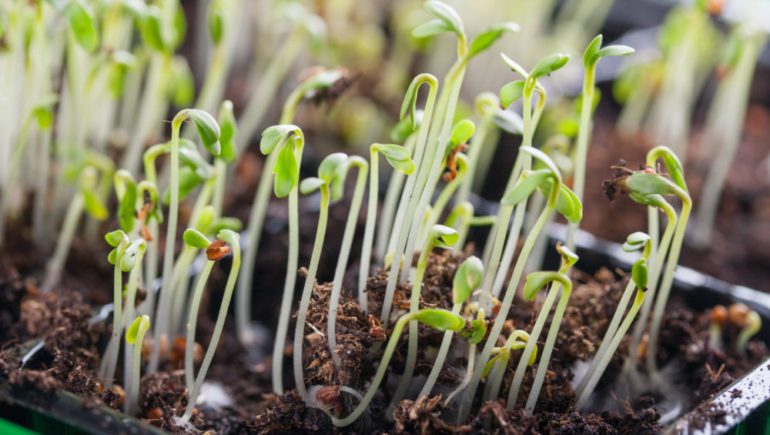Buying and installing full-grown plants from a nursery is the quickest — and most expensive — way to landscape a backyard. But if you’re a gardener on a budget or have a green thumb, try gardening the old-fashioned way.
From seeds. Purchase envelopes of plant seeds from a local garden center. Or order them from a gardening catalogue or online nursery. Or, try harvesting seeds from your own landscape. Near the end of the growing season, clip flowers, dry them and place them gently in envelopes for the winter. Early the following spring, gently massage each flower over a white sheet of paper to harvest the seeds for planting.
Using a clean seed tray or another container, fill to within a quarter of an inch with equal parts peat moss, perlite and vermiculite. Sprinkle the seeds onto the surface and cover with soil to the equivalent of twice the diameter of the seed. Mist the top of the soil with a spray bottle, cover lightly with clear plastic and set in a place with good, indirect sunlight. When seedlings have grown enough to establish a good root system, transplant them outside.
From bulbs. Certain plants such as tulips, crocus and hyacinths grow from bulbs planted in the fall for the following spring. Plant them after the summer’s heat has waned and evening temperatures are between 40 degrees and 50 degrees.
Soil should be loose and have good drainage. Plant large bulbs about eight inches below the surface and smaller bulbs at about five inches below the surface. Take care to plant with pointed ends upward. Water to stimulate growth but don’t soak. In the spring, as the plants emerge, add an organic fertilizer or compost on top of the ground and water as needed. Bulbs will naturalize, spread and multiply over the course of many seasons. Crocuses, irises, daffodils and tulips are spring- and summer-flowering bulbs that are reliably perennial.
From cuttings. Plants can be propagated by cutting a piece from an existing plant, then placing the cut end into a nutrient-rich rooting medium. Soft green cuttings should be taken during spring to early summer. They will take root quickly. More ripe cuttings are taken mid-summer, will take a little longer to root but are hardier. Hardwood cuttings are taken in early fall for planting the next spring.
A side branch taken six to eight inches from the tip should be cut just below a node or joint. A side branch cut close to the main stem is called a basal cutting. A side branch taken right from the main stem with a small piece of it still attached is called a heal cutting. The cut ends of stems should be dipped in a root hormone, placed in the same growth soil mixture as the seed medium described above and kept moist but not soaked during the rooting process.
Root cuttings of some plants can also propagate a new plant in a growth medium.


